Goldenrod Community 2019
In the past couple of years, I have learned to love the lowly goldenrod. ( Here it is in full bloom. This little moth looks like the one we saw in the Redbud page, doesn't it? And here is a little thistle treehopper in the process of moving to the next thistle via the goldenrod. Or will it start a colony on goldenrod itself?
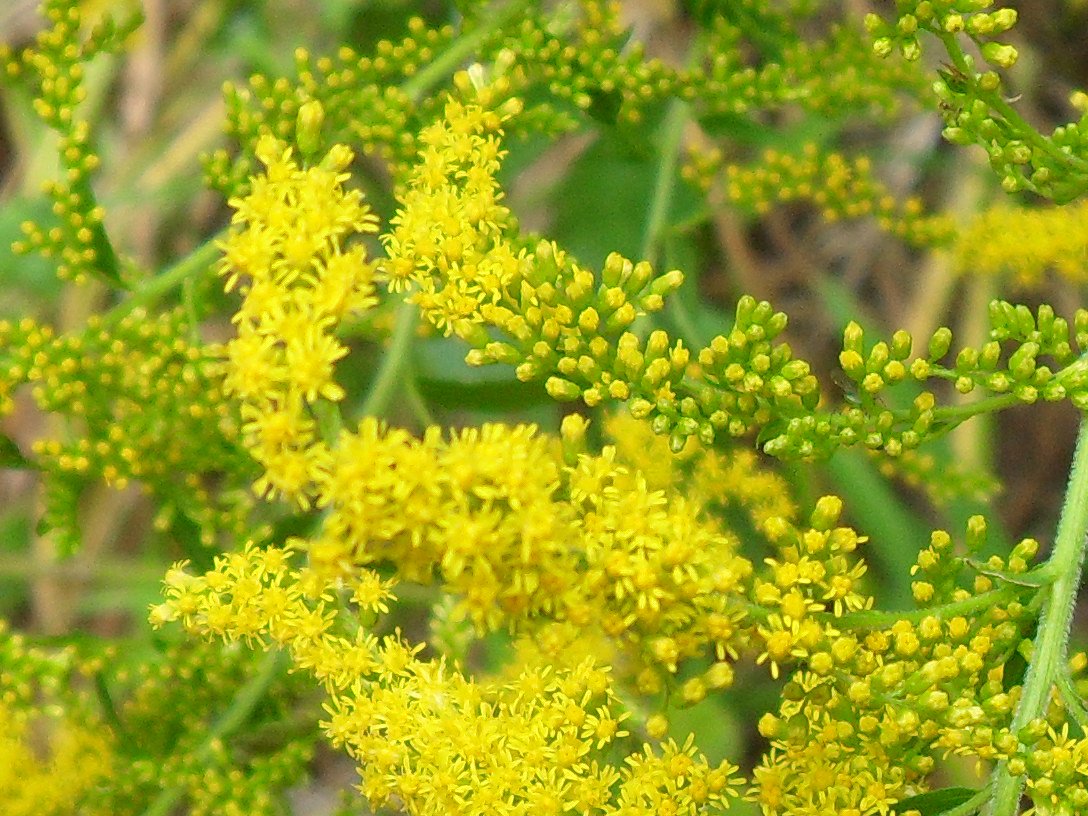
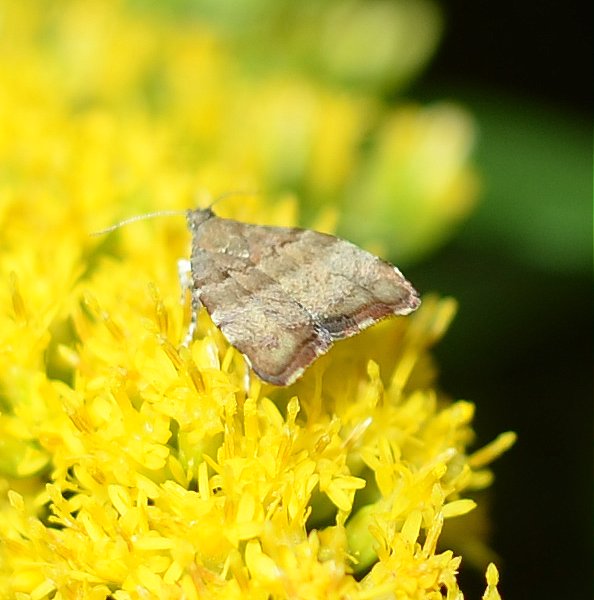
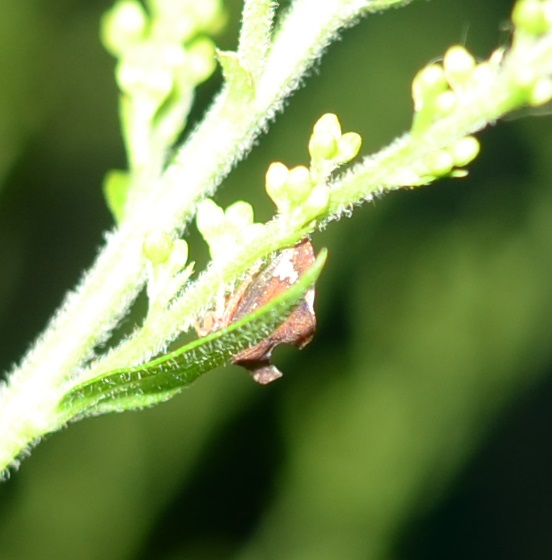
Here is a "brown" lacewing, really a pinkish-gold lacewing, on the siding of my woodshop in November 2015. But it starts out its life on the goldenrod as this long brown larva. It travels all over until it finds a red goldenrod aphid, which it devours hungrily. Goldenrod supports other aphids as well, but that one actually has goldenrod in its name. Here is a colony of red aphids. Note how it is bearing young. (One of the things everyone seems to hate are Aphids. I have several kinds on my Goldenrod. What is not well known (and I can't remember where I read it) is that Aphids are one measure of the health of an ecosystem. They certainly make it more interesting.)
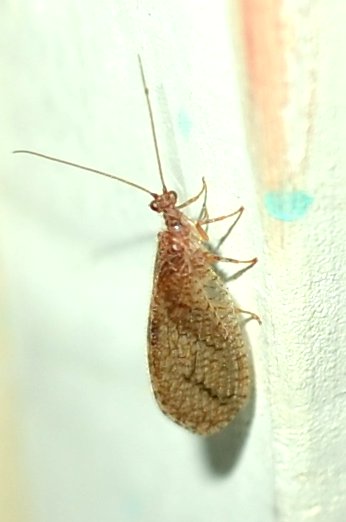
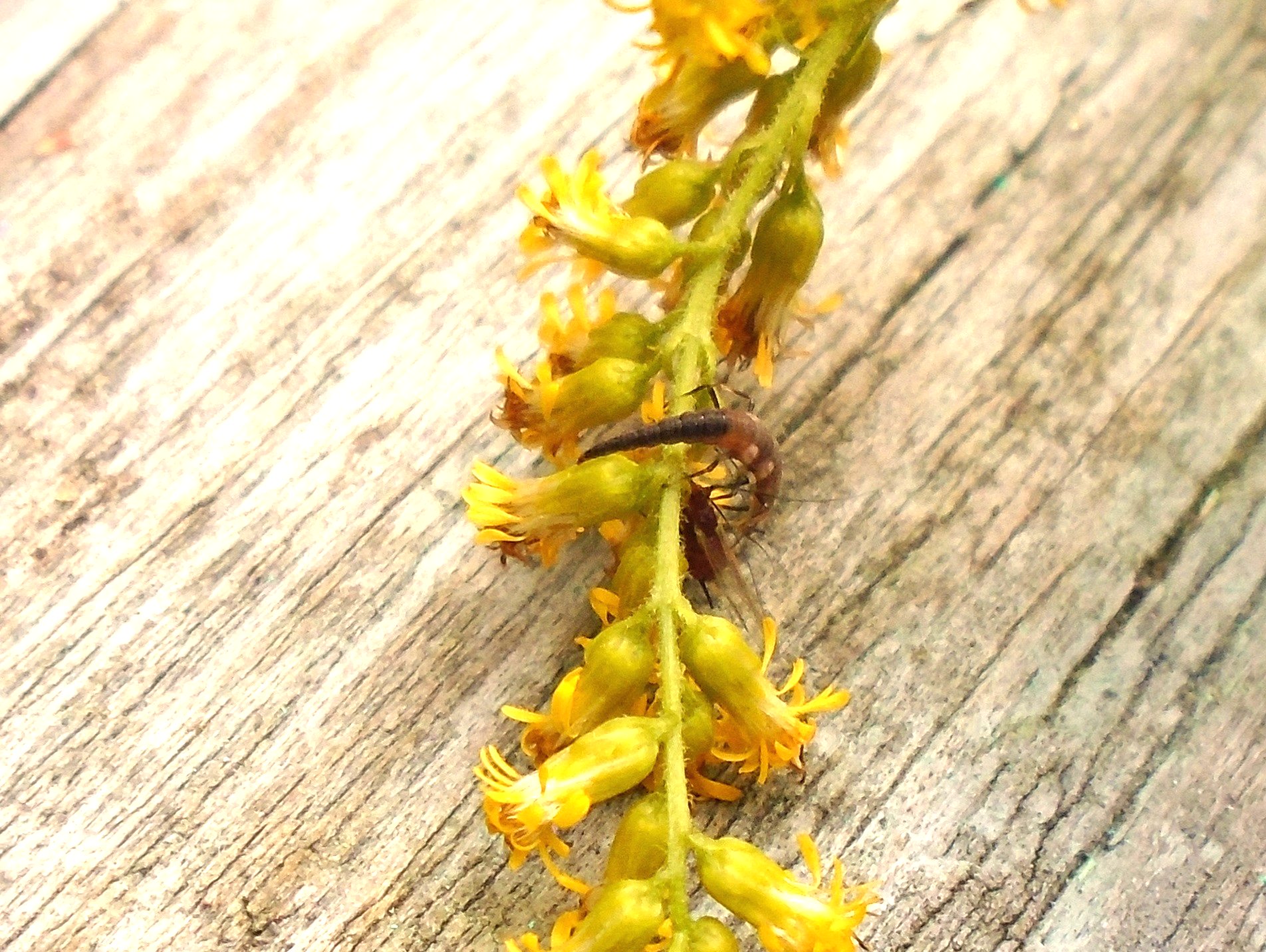
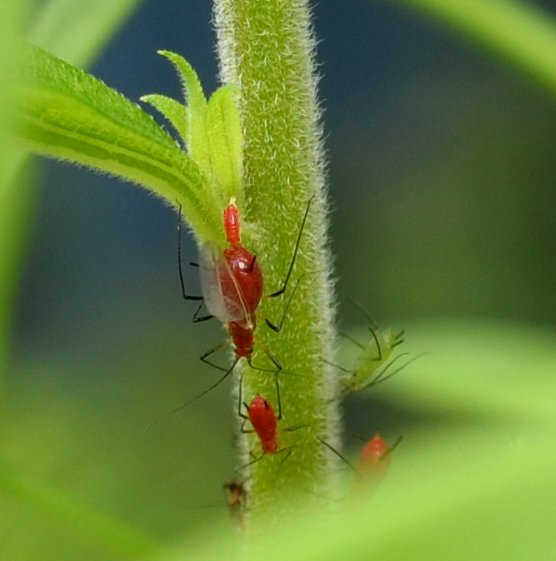
More on Lacewings vs Aphids. First, some Lacewing photos. Here you want to view the pictures from right to left. On the far right, a Green Lacewing (with a wound on its wing) is aiming for a Spider. In the middle, the Spider is trying to duck the Lacewing, and on the left, a better view of the Spider.
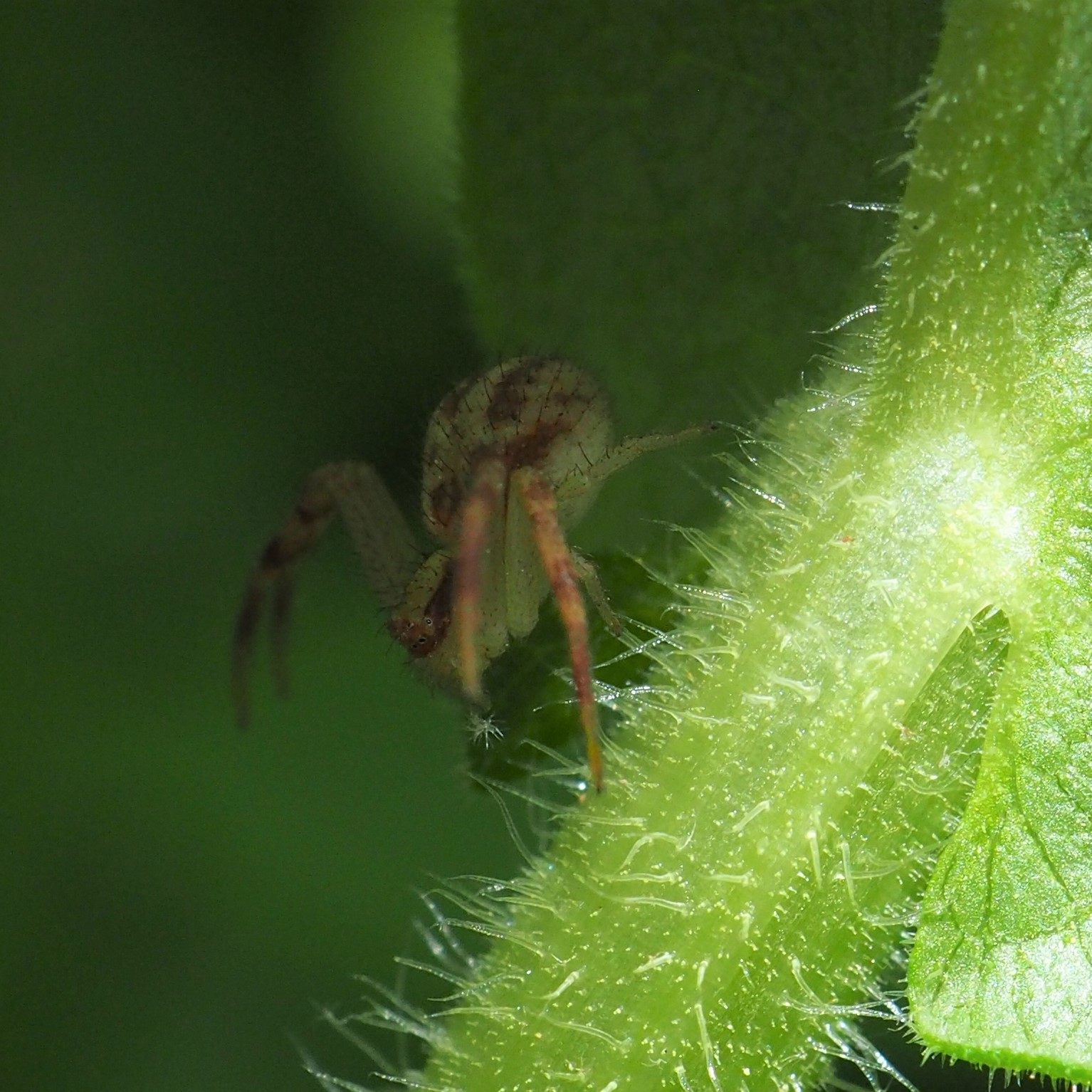
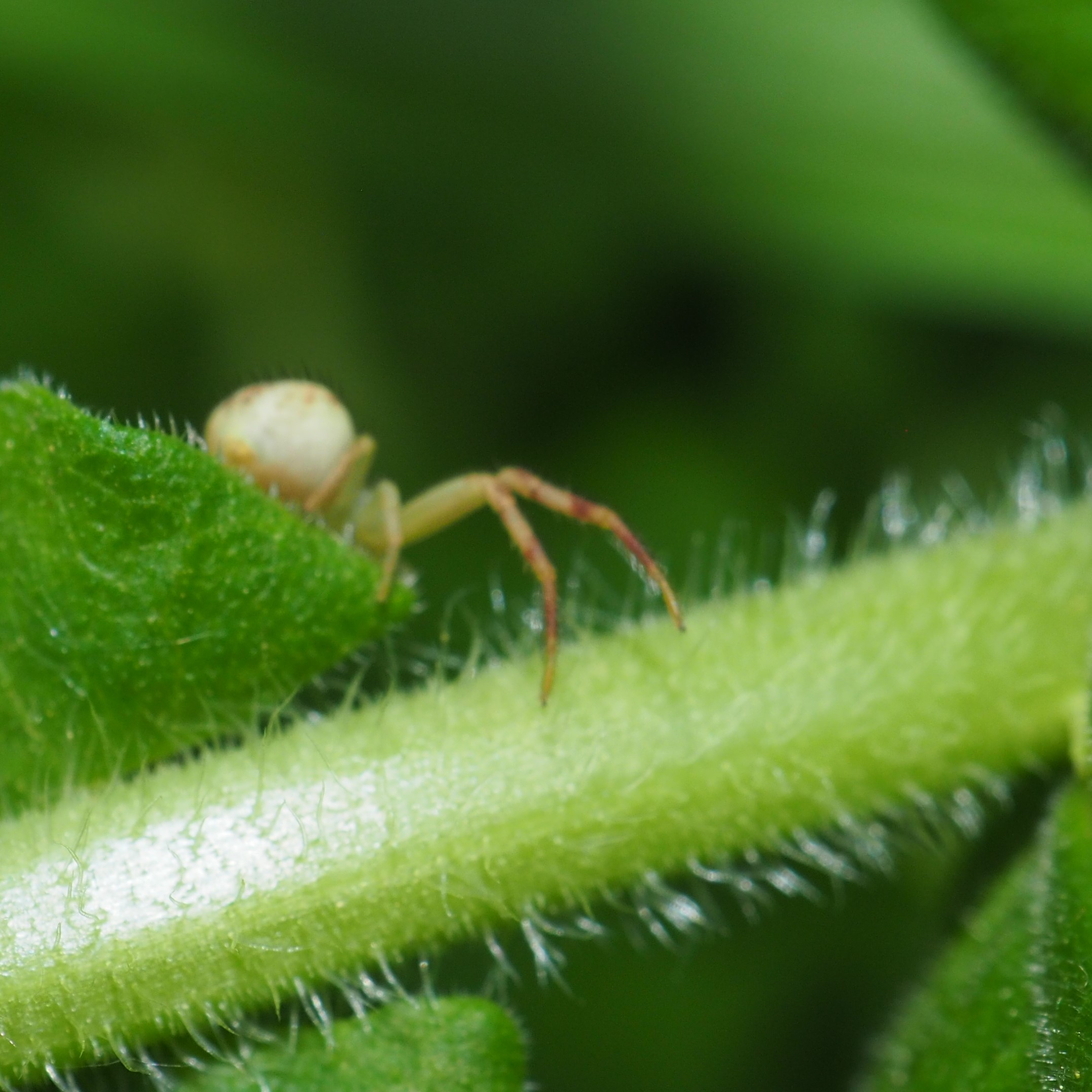

A few more Lacewing vs Aphid shots.. Brown Lacewing Larvae are having a picnic on green Aphids. Next, a Green
Lacewing is eyeing green Aphids. Last, if you thought Green Lacewing Larvae would be green, oops.
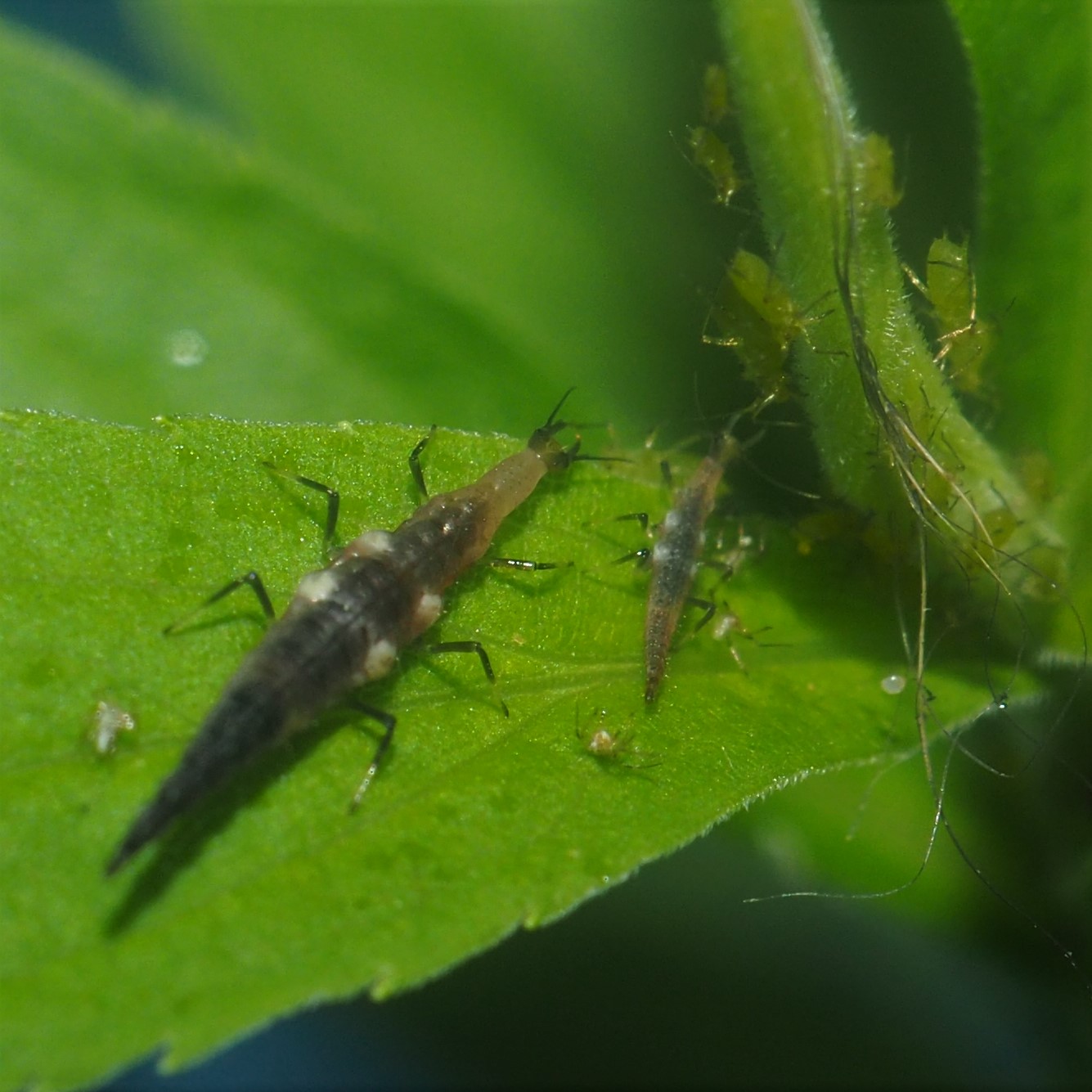
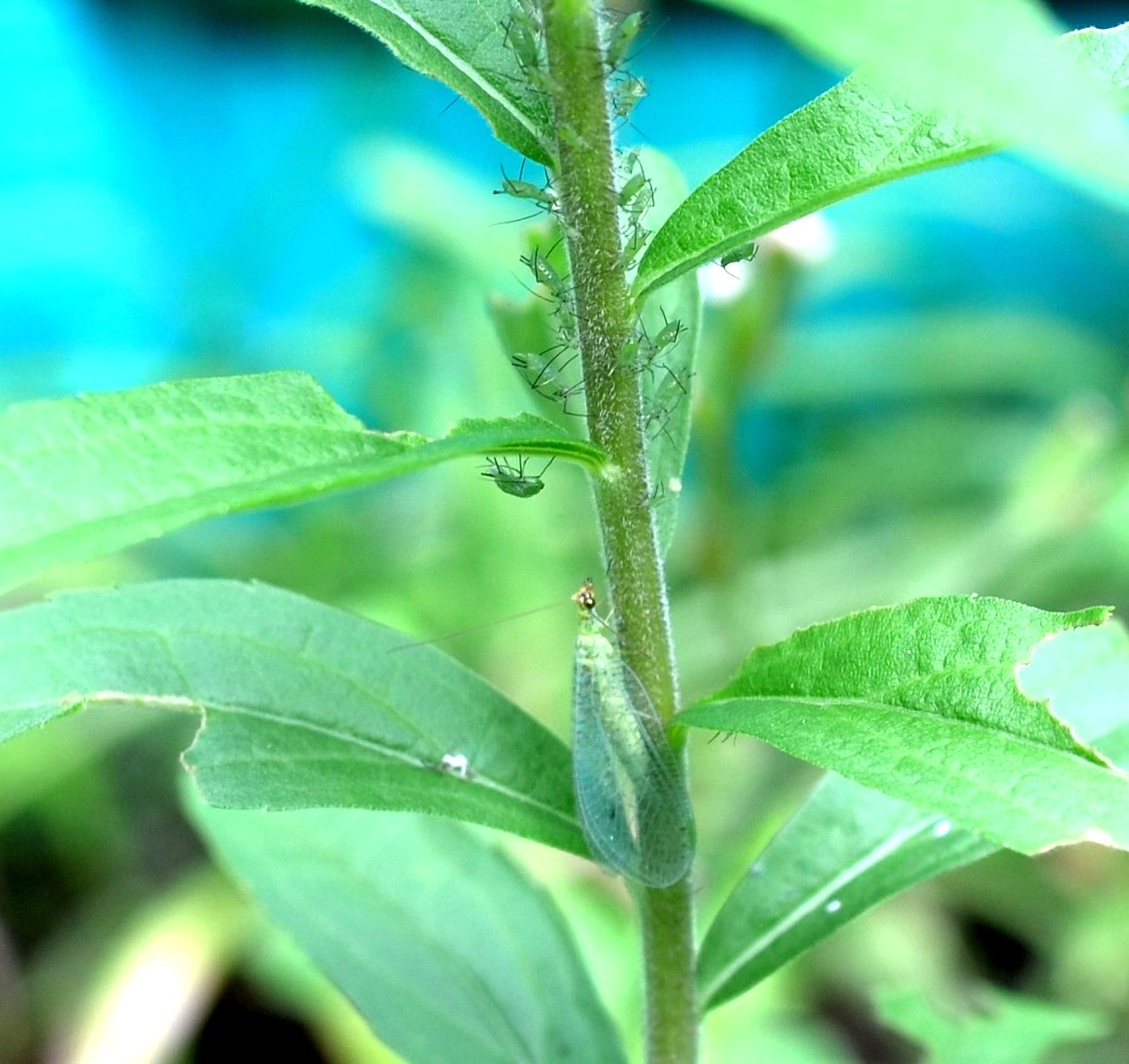

Here is one of my diaries about Aphids and their predators.
I will have to fill in some background about one of the enemies I never knew till 2020 existed.
(Note from 2020) First let me go off into some remarks about the life history of Hover Flies. I only have one example of this life Cycle and had to borrow the Adult, which I've never seen directly. Here is an observation from @orange_nc, fellow member of iNat. This Larva was on a Goldenrod plant with lots of Aphids. That's what the little fellow in picture 2 is eating! Third is a Hover Fly Pupa.

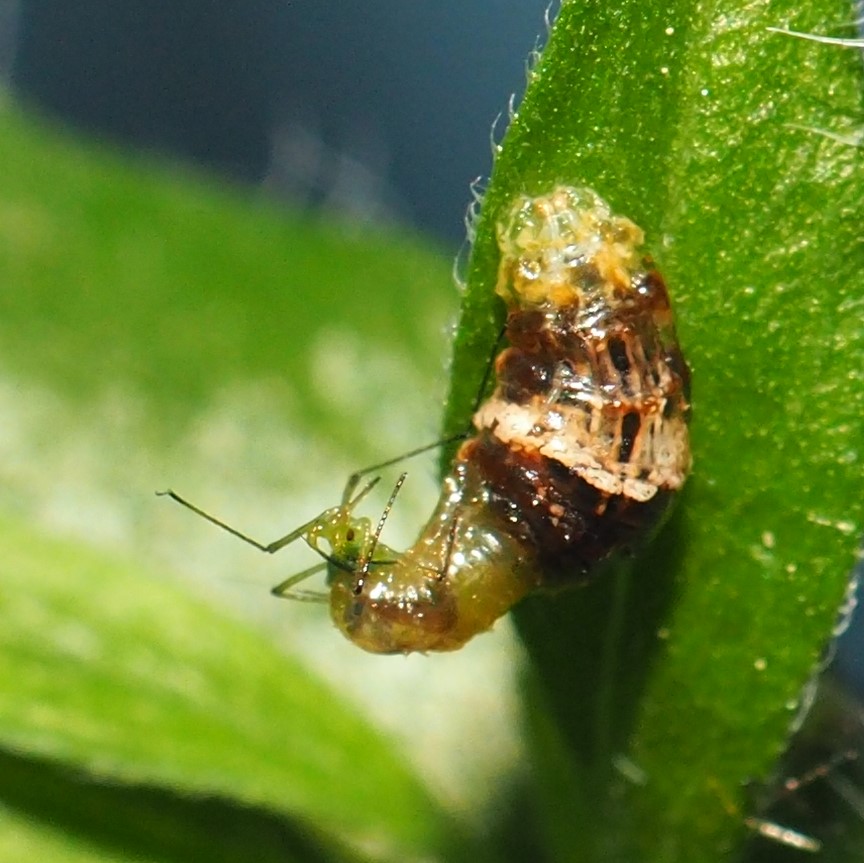
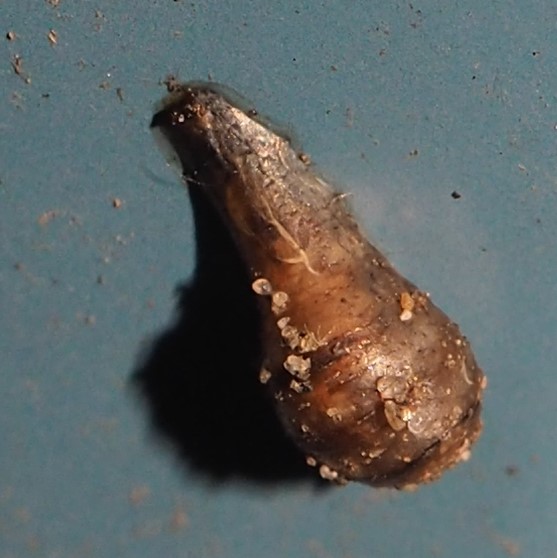
Some creatures just pass by the goldenrod, or find it a pleasant trysting bower, like these little bees. Here is a European earwig, probably just stopping by. In 2014 I found 29 different insect and spider species on the goldenrod, but not all are formal Members of the Community. But this is the (actual name) Goldenrod Soldier Beetle - it will later fly to matching flowers like Black-eyed Susan.
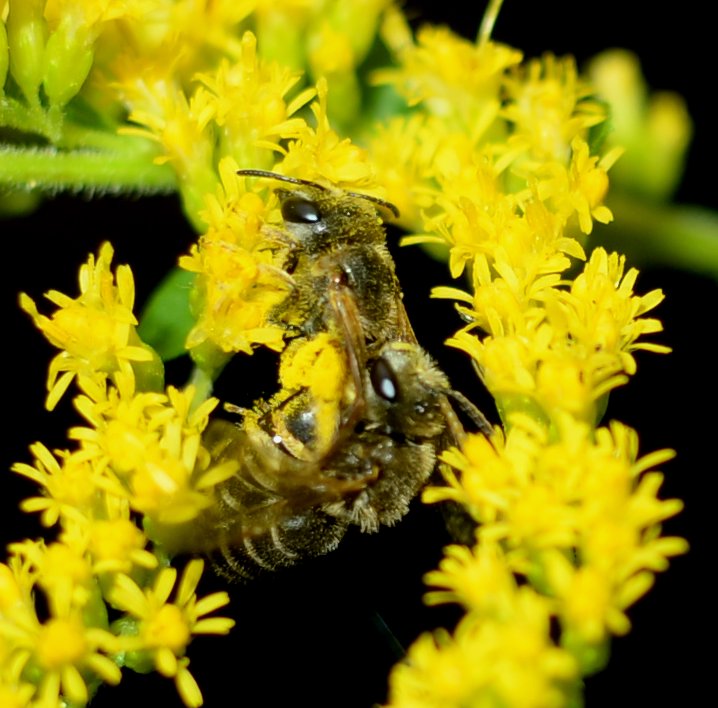
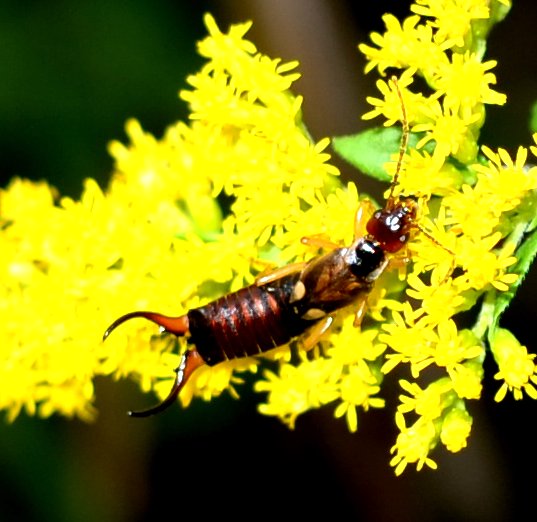
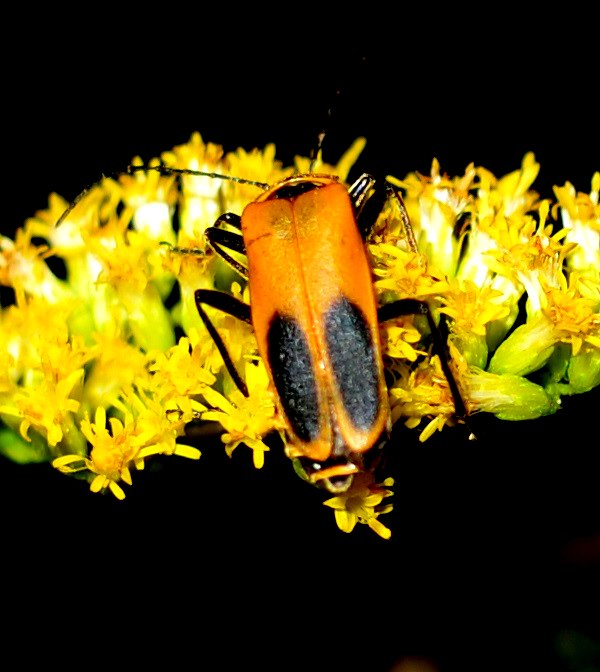
We are very lucky here. Hardly anyone bothers to post this unassuming bug (Drymus unus, it doesn't even have a common name). But every fall, as the Goldenrod is going brown, there they will be. I wonder what other plants they find so pleasant to mate in.
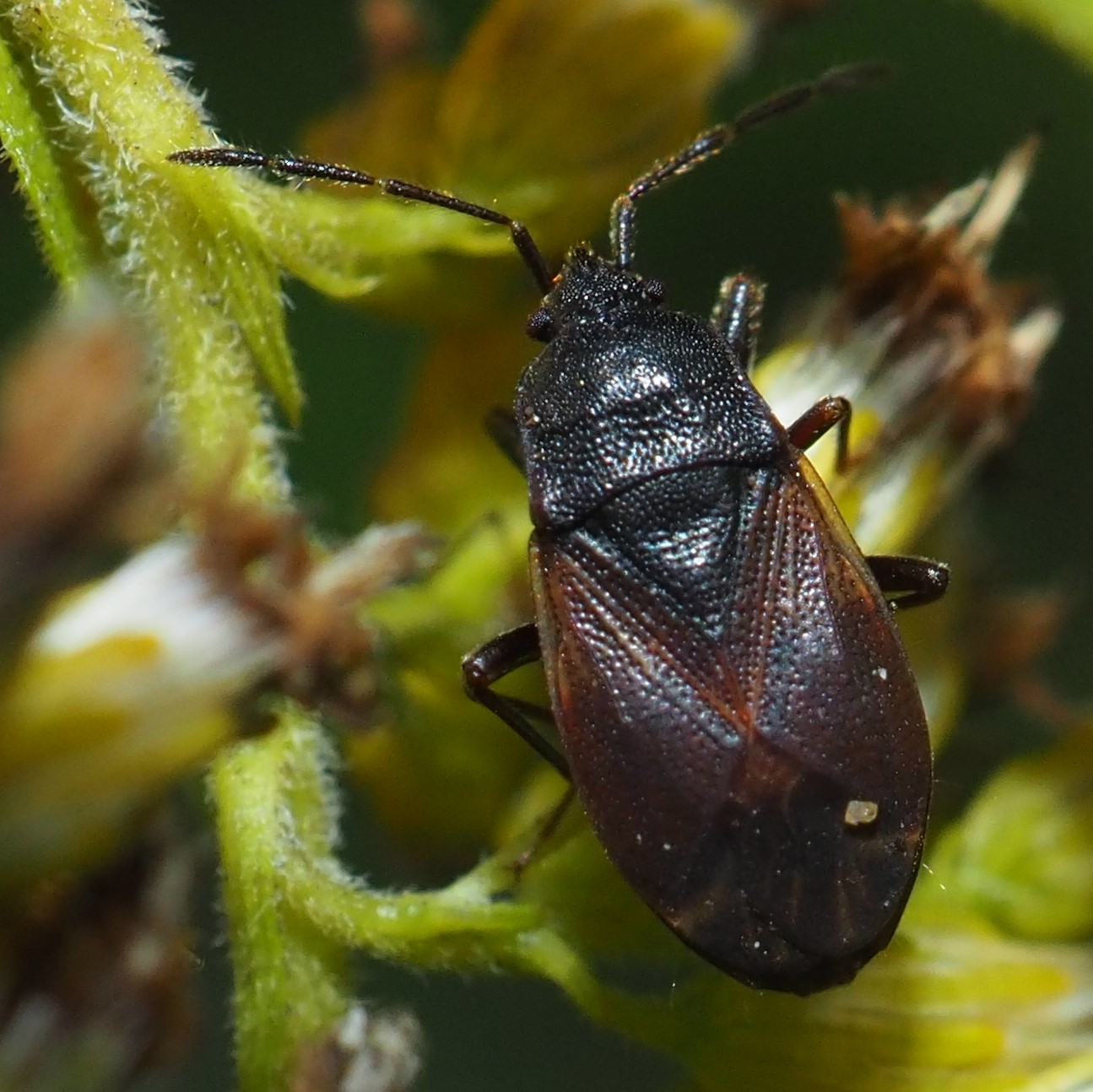

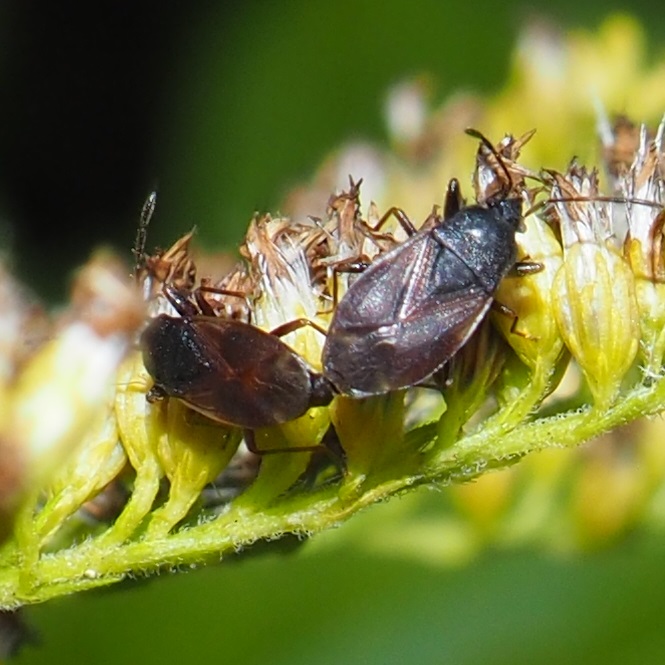
So, I hope you are more impressed with the lowly Goldenrod.
Environment























